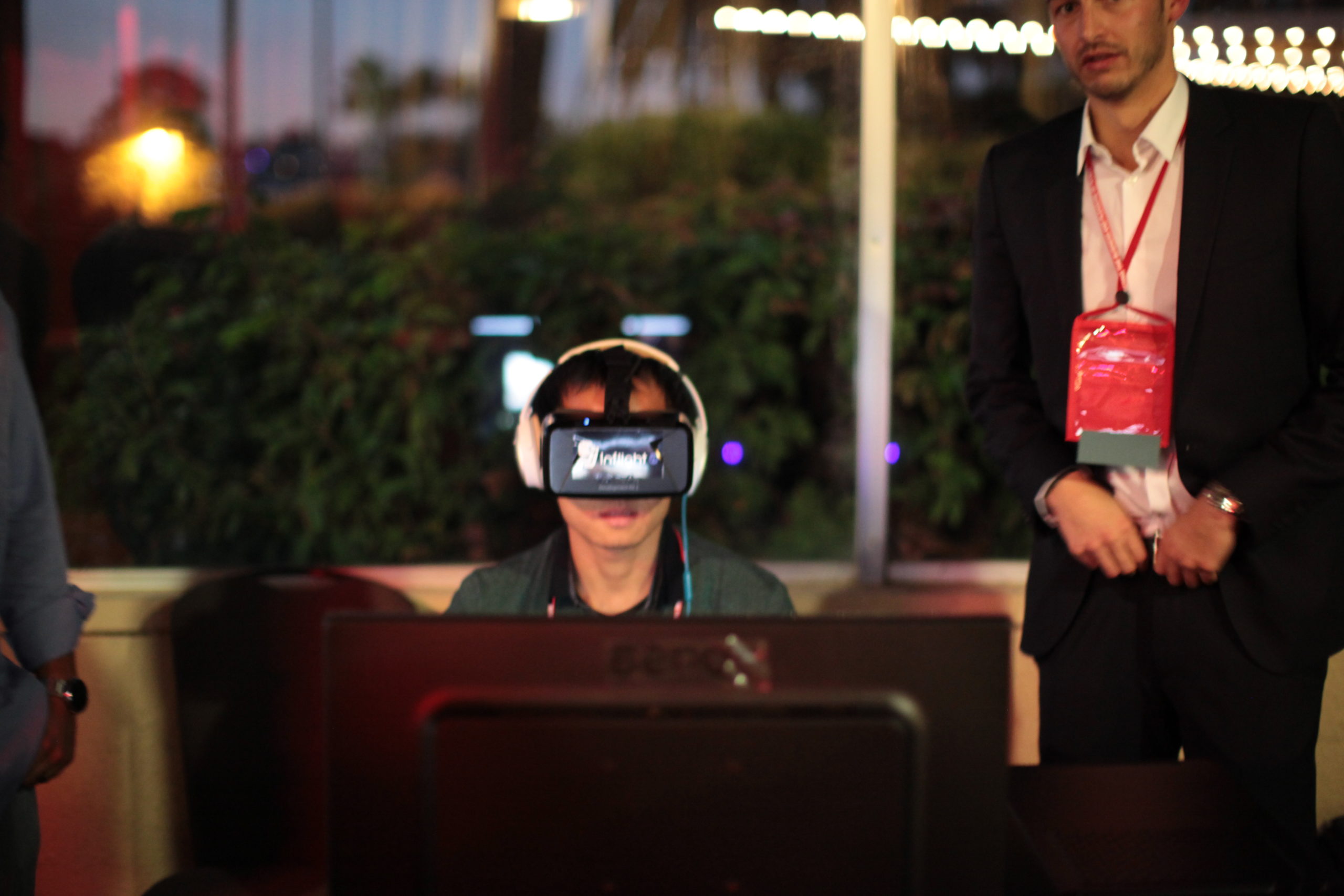The Future is Now: Bringing Virtual and Augmented Realities to the Aircraft Cabin
Share

APEX Insight: As airlines begin to test virtual reality technology in flight and on the ground, it’s no longer a question of when, but rather how the technology can be adopted on board. APEX TECH panelists from next-gen content companies castLabs, Osterhout Design Group and Inflight VR agree that the time for VR in the aircraft cabin is now. “Airlines are ready for disruptive technology,” says Patrick Johnson, Osterhout Design Group.
Closing out day one of the APEX TECH conference Tuesday, Nov 17, Newport Beach, representatives from next-gen content companies castLabs, Osterhout Design Group and Inflight VR presented the latest developments in the DECE (Digital Entertainment Content Ecosystem) landscape and their various perspectives on airlines adopting virtual reality (VR) technology in the aircraft cabin.
While VR has its ongoing limitations, airlines are beginning to experiment with the technology in flight and on the ground. Earlier this year, Qantas became the first airline to offer in-flight entertainment in VR while Virgin Atlantic announced last week an app partnership with Microsoft that takes users on a virtual tour of its Upper Class cabins before they’ve even booked a ticket. “Having the opportunity to experience the differences of various booking classes before you enter the aircraft is likely to influence purchase decisions,” says Michael Stattmann, CEO at castLabs.

But while the technology is currently targeted towards business class travelers, the founders of Munich-based startup Inflight VR, Nikolas Jaeger and Christoph Fleischmann, see a unique fit between VR technology and the air travel industry, including passengers flying in economy. “Passengers don’t want to be reminded they’re in a cabin,” explains Fleischmann. “They would rather be somewhere else and VR is the first technology that allows us to do this,” he adds.
Skeptics of the technology cite motion sickness and nausea as a setback for in-aircraft use of VR. However, according to Jaeger, creating an interactive virtual environment can eliminate motion sickness to a great extent. “Passengers need to be able to interact with the environment to feel comfortable,” he explains, and adds that the Inflight VR platform which they are currently working on addresses these issues.
“Airlines are ready for disruptive technology.” – Patrick Johnson, Osterhout Design Group
San Francisco-based Osterhout Design Group (ODG) envision VR and augmented reality (AR) technology beyond its in-flight entertainment potential. Patrick Johnson, client services manager, ODG describes the key role it could play in passenger safety. “AR could help passengers in emergency situations with step-by-step virtual instructions,” explains Johnson and further suggests the use of smart glasses by cabin crew in the event of a medical emergency: “Flight staff equipped with smart glasses and Wi-Fi can instantly video conference doctors while remaining hands-free,” he says, stating flight diversions in these cases could be avoided.
“Airlines are ready for disruptive technology,” adds Johnson. “Instead of playing catch up, it might be good time to invest in it today.”


